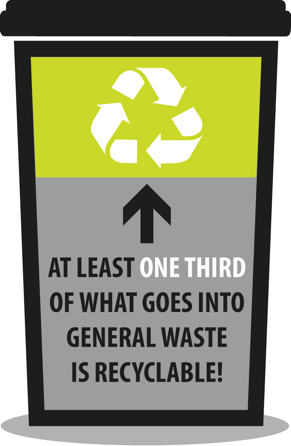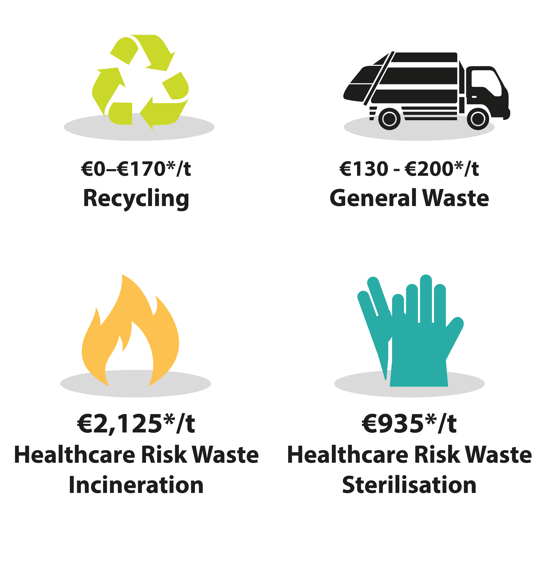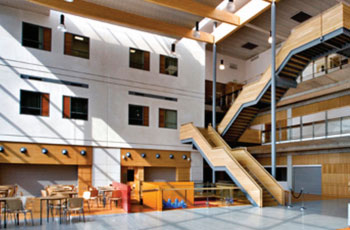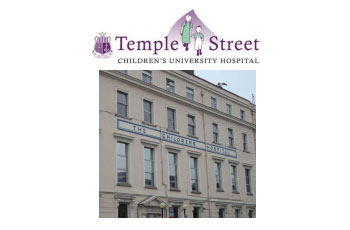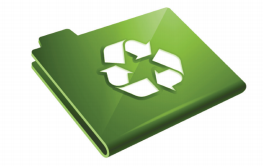3
Best practices to reduce waste generated
One of the most important key measurements to reduce non-hazardous residual waste and increase recycling in your facility is to ensure that your recycling bins are properly used. The following are some best practice tips that you should consider.
Make it clear what can be placed in the recycling bags
Compile a clear list of the materials that are accepted in the mixed recycling bags, and provide this to staff ahead of the roll-out of the bags and campaign. Outline that all other material should be placed in the non-hazardous residual waste bag.
Ensure recycling bags are placed in the right location
Ensure a recycling bin is provided in those areas where large volumes of packaging are generated (e.g. clean preparation rooms in wards, store rooms, etc.).
Within the room or area, position the bag where the recyclable material is generated (e.g. near workbench or near storage cupboard), rather than at the entrance to the room. Staff won’t then have to carry the bulky recyclables a distance to the bin.
Make the recycling bins easy to use
Consider using mobile bins where high volumes of recycling are generated in different areas at different times. For example, in a theatre, packaging is generated in the preparation area before the procedure and in the vicinity of the operating table during the procedure. The mobile bin can be moved to another area when needed.
Mobile bins are also beneficial if space is limited in connecting rooms (e.g. theatres, out-patients clinics and preparation rooms), and it is not possible to provide a recycling bin in each room. The mobile bin can be moved between the rooms, as needed. This also reduces the investment required for the purchase of bins.
Use different colour bins for each type of waste
Where possible use different coloured bins for each type of waste. People recognise colours and symbols quicker than reading words – so by using different colours staff can quickly recognise what type of waste should be placed in the bin.
Prevent contamination with liquid and food
Food or liquid waste (e.g. coffee) can easily contaminate a mixed recycling bag so badly that it has to be disposed of as non-hazardous residual waste.
In areas where quantities of food or liquid waste are generated (e.g. areas providing food, waiting rooms with drink facilities, etc.), consider providing a food waste bin or liquid waste bin, to prevent the contamination of the mixed recycling bags.
The segregation of the food and liquid waste will also reduce the contamination of general landfill waste bags. These bags can leak during transport, resulting in possible cleaning and slippage issues.
In general, segregated food waste is also cheaper to dispose of than when the food is disposed of in the non-hazardous residual waste stream.
An easy first step to reducing waste costs is to ensure that recyclable materials are actually recycled. In order to do this your current waste management policy should be reviewed. This should consider the following:
- Have a clear waste management policy in place
Ensure there is a clear understanding of what materials should be recycled and that this is communicated to all staff. If a formal policy is in place regarding waste segregation, which is supported by hospital management, it will provide greater impetus for areas throughout the hospital to actively segregate recyclables.
- Examine the types of waste generated and review the general landfill and clinical waste bins provided
Having the appropriate waste management facilities in each area of a hospital is one of the best ways of ensuring good waste segregation. For example:
If no landfill or clinical waste is generated in an area, then make sure to remove these bins. The more bins provided, the more work is needed to empty, re-line, and clean bins.
If only hand towels from the hand wash sink are disposed of in the non-hazardous waste bin, then place the bin next to the hand wash basin.
- Ensure mixed recycling facilities are provided throughout
Cardboard is generally segregated very well in Irish hospitals, as it is produced in large volumes and is managed separately. Separately collecting and baling cardboard can provide a revenue stream to offset other waste disposal costs.
Though all hospitals now have mixed recycling facilities, ensure that there are appropriate bins throughout the hospital.
- What resources for recycling are available in your facility?
If you plan to increase recycling, ensure that you have enough space in your waste holding area to hold a compactor or extra bins, to store the recyclables.



